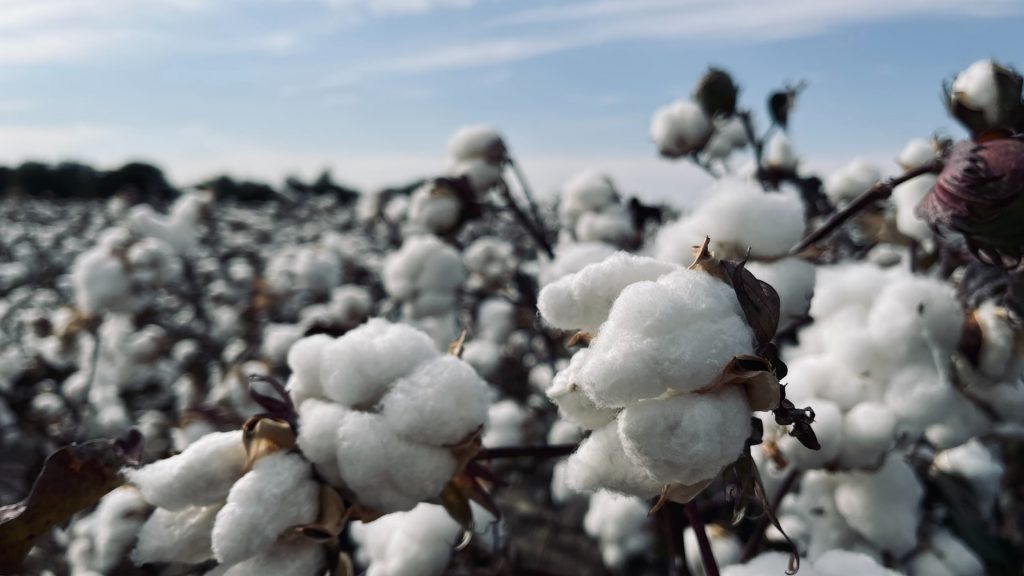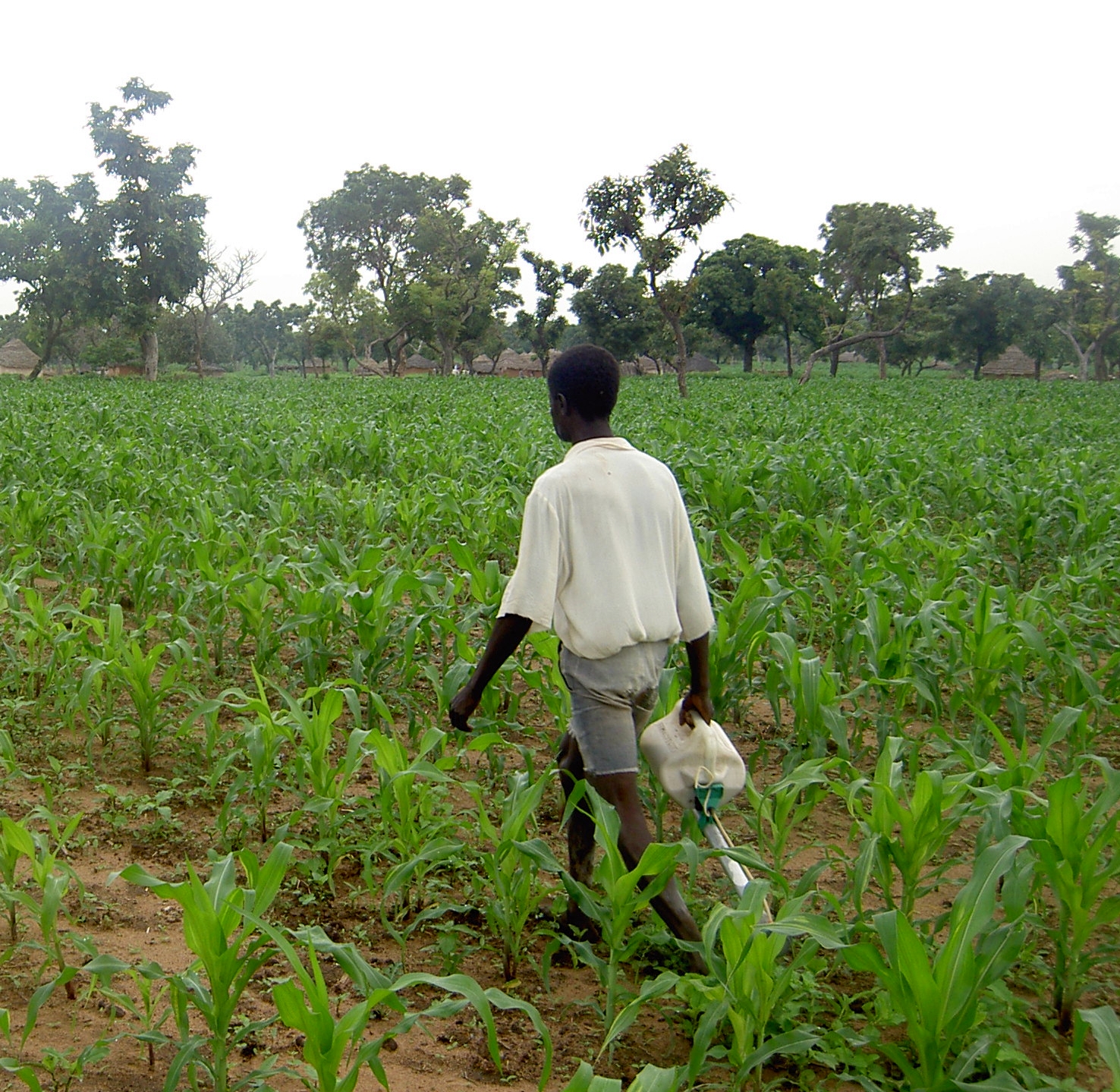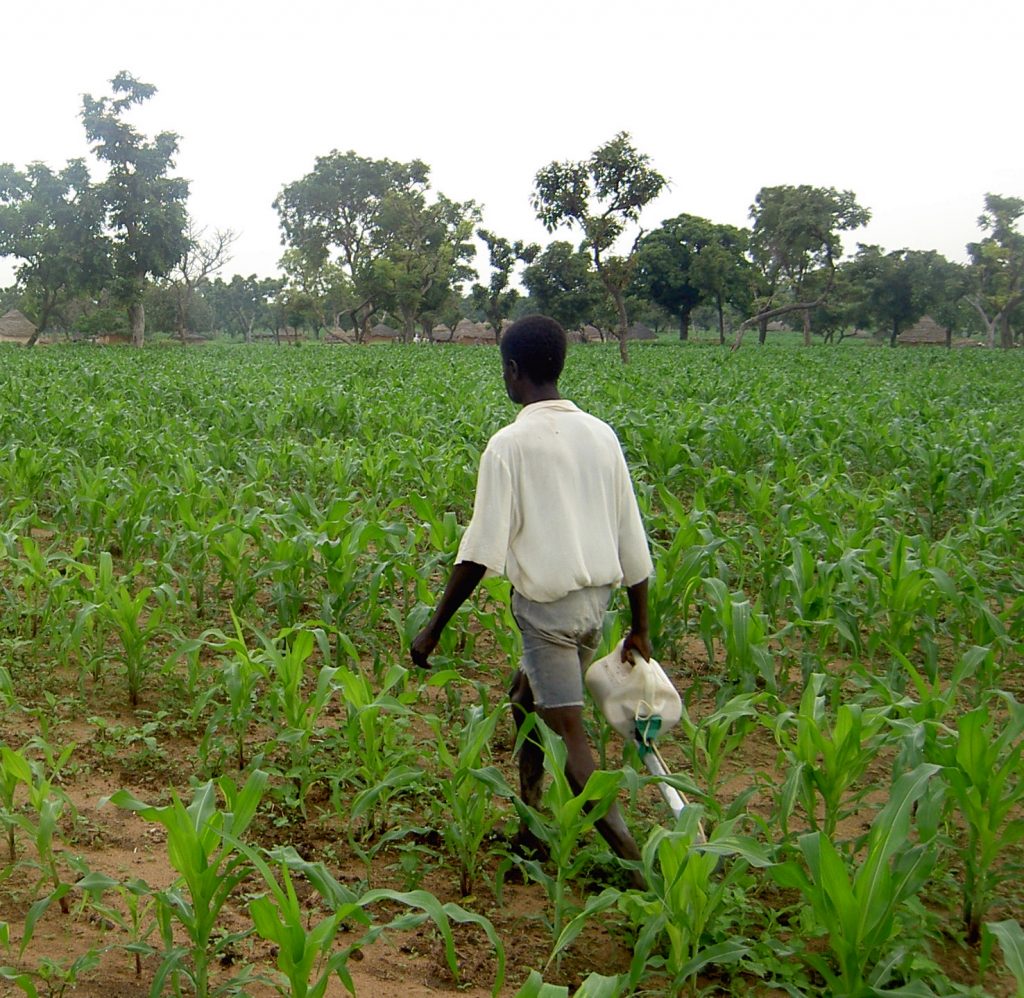The complexity of the agroecological transition in Africa: the example of herbicides in cotton-growing areas in Cameroon
In the cotton-growing areas of northern Cameroon, the increased use of inexpensive herbicides, which make labor easier, is contributing to the disintegration of the traditional model of mechanical weed control, carried out using animal traction. While it allows for the advancement of conservation agriculture, thanks to direct seeding, it nevertheless poses serious risks to human health and ecosystems. It is important to design, with all stakeholders in the sectors and territories, and first and foremost farmers, transitions that will reduce dependence on herbicides, especially the most dangerous ones.

The traditional model of crop-livestock integration
Although introduced during the colonial period, cotton cultivation only developed in sub-Saharan Africa from the 1970s, particularly in northern Cameroon, the case study for our purposes. Cotton was intended to provide regular income for farmers and foreign exchange for states. This political choice was associated with the objective of food self-sufficiency envisaged by an intensification of the cotton/cereal/legume cultivation system. Cotton is produced by small family farms (3 to 15 ha, sometimes more), whose primary objective was to feed their members. The technical systems promoted were then based on the principles of the Green Revolution: mineral fertilization, chemical crop protection, improved varieties, and tillage. To this end, animal-drawn cultivation, mainly by cattle, was actively popularized by subsidizing equipment and providing medium-term loans to farmers. Animal traction allowed for the reduction of weed pressure before sowing, thanks to ploughing and then mechanized weeding and earthing up when the farms had all the appropriate equipment. On this technical basis, agronomists and zootechnicians proposed a more complete integration of livestock farming into agriculture by popularizing the production and use of manure, animal transport and the intensification of a small livestock nucleus.
The development of the use of herbicides
Promoted by the cotton company (Sodecoton), the use of herbicides first appeared in the south of the Cameroonian cotton basin, a rainy area (1000–1200 mm) where weed pressure is high and cattle breeding is restricted by trypanosomiasis. The application of total herbicides (paraquat-based until the early 1990s, then glyphosate) and crop-selective herbicides (diuron on cotton, atrazine on cereals) was, according to Sodecoton, intended to supplement the weed control achieved with standard tillage techniques. But farmers in this region innovated by using paraquat (best-known trade name, Gramoxone) and then glyphosate (best-known trade name, Roundup) to carry out direct seeding without working the soil. These total herbicides make it possible to do without mechanical plowing to "clean" the soil before sowing. This is how direct seeding and the term “chemical ploughing” were born in the cotton-growing area.
The spread of this technique was very rapid in the south of the cotton basin and then gradually spread northward. Similarly, selective pre- and post-emergence herbicides have been widely adopted, especially for corn, including on farms not affiliated with the cotton sector. The use of total glyphosate-based herbicides in the inter-row of crops has appeared more recently thanks to the marketing of small spreading devices (manual or battery-powered) equipped with a plastic cover. Farmers have thus opted to drastically reduce soil preparation and weeding work; only earthing up[1] Animal-drawn cotton growing is still practiced in at least 50% of plots. Many producers even manage to grow corn without "touching" the soil (except for sowing) and weed control is entirely achieved by two or three herbicide applications, or even four in some cases.
This development was made possible by the organization of the supply of inputs and spreading equipment by the cotton sector, but also by the vitality of the retail trade due in part to the proximity of Nigeria. It is also explained by the low labor cost of these new practices. This characteristic is important for larger farms (cultivating more than 10 ha) which use hired labor, the cost of which increases due to its scarcity during peak work periods. For example, chemical weeding is 2 to 3 times less expensive than mechanized or manual weeding when carried out by day laborers. On smaller farms, operating solely with family workers, women and young people particularly appreciate the use of herbicides, which considerably reduces their workload. Only sowing, thinning, and harvesting remain manual. For these women and young people, herbicides represent a form of modern agriculture, considered by most of them to be a very arduous and unrewarding activity. The time thus freed up can be invested in individual activities (small fields, processing, livestock, trade) which are sources of income and a certain emancipation. The third argument in favor of herbicides is the difficulty of maintaining a cattle farm, even a simple pair of oxen, essential to tillage systems. Always faced with various epizootics and the lack of fodder in the dry season, farmers must cope with thefts and, more recently, ransom demands following the kidnapping of producers who own property, and therefore a livestock nucleus. This growing insecurity leads many of them to sell a large part of their livestock or entrust it to herders. This disintegration of the crop-livestock integration model could have consequences on the current dynamic of increasing manure production, as well as on the maintenance of cultivation and animal-drawn transport.


Atrazine spraying on a well-developed maize crop, Garoua region, Cameroon. ©P Dugué, CIRAD.
The progression of direct seeding
Since the 1990s, agronomists have been interested in herbicides for the development of cover crop sowing (CCS) or conservation agriculture systems, based on no-till, permanent soil cover and crop diversity. In northern Cameroon, these cropping systems include direct sowing of cotton in rotation with a cereal associated with a cover crop.[2] (brachiaria, crotalaria), require the use of total and selective herbicides. Indeed, the soil cover with the previous year's biomass (mixture of cereal straw and service plant residues) is always imperfect, even in the rare fields spared by the vain grazing of cattle in the dry season. The work of termites, the consumption of small ruminants traditionally left to wander during this season and the removals of rural people (fuel, construction materials, etc.) explain this. As a result, the vast majority of plots managed in DMC have very partial soil cover when cotton has to be sown directly between May and early July. Even in the best-covered plots, weeds and sometimes the seeds of cover plants easily manage to germinate and break through the residue cover.
Today, many experts consider that the system of direct seeding after chemical plowing, widely adopted in northern Cameroon, is a step forward in terms of greening agriculture, arguing that the soil is no longer worked and therefore its macro and microfauna and humus are better protected. This assessment is highly debatable. On the one hand, the soils are always exposed to winds and the first rains, because they are very poorly protected by residual biomass. On the other hand, the increase in the number of herbicide applications during crop rotation does not go in the direction of preserving the quality of water, soil and biodiversity. Moreover, without questioning the right to common grazing even on part of the cultivated land, it is impossible for farmers to preserve the cover biomass, except by investing in costly guarding or enclosure work. Overall, unworked soils continue to deteriorate due to wind and water erosion, and due to insufficient inputs of organic matter on the surface or in the form of manure or compost. Concerning pollution from agricultural sources, there are too few studies conducted in tropical conditions to objectively assess their impacts on the health of ecosystems, rural areas and urban dwellers. On the other hand, farmers applying herbicides are increasingly exposed, due to the increased frequency of herbicide use, the continued authorization in sub-Saharan Africa of active ingredients that are dangerous to humans and have long been banned in Europe (atrazine, diuron) and the very low use of recommended protection (gloves, boots, masks).
Organizing the agroecological transition
The very rapid and massive increase in the use of herbicides, in northern Cameroon as in other African cotton-producing countries, could be considered by some as the entry of family farming into a form of productive and modern agriculture. But we note that this rapid evolution is a source of concern for the sustainability of agriculture: dysfunctions of ecosystems due to agricultural pollution, damage to the health of agricultural workers, disintegration of crop-livestock integration, etc. On the other hand, the use of herbicides is a central element in the feasibility of DMCs, which can quickly restore soil fertility through regular organic inputs as long as the cover biomass is preserved. This worsening of soil fertility is essential to ensure the sustainability of family farming. In this context, it seems to us that a sudden and rapid ban on all herbicides would be counterproductive as they are now firmly anchored in the technical and strategic choices of farmers. Thus, family workers, especially women, have seen their manual labor load considerably reduced. Would they be ready to return to manual weeding, which is so taxing for the organism?
Rather, it is appropriate to design with all stakeholders in the sectors and territories, and first and foremost farmers, the transitions that will reduce dependence on herbicides, first and foremost the most dangerous. On the one hand, this leads to deepening the work of systemic and participatory design of new cultivation and production systems where a diversity of practices, as agroecological as possible, will coexist, such as animal traction, organic manure production, agroforestry and conservation agriculture. On the other hand, it is appropriate to strengthen the work, too little in Africa, of assessing the impacts of herbicides on ecosystems and human health, by developing local skills in ecology, toxicology, epidemiology, etc. Finally, the work of informing and training farmers must be continued and strengthened to reduce the impacts of herbicides, if possible the least dangerous ones, which they would be led to use again and above all to study alternatives with them before their dependence on this input becomes irreversible.
To find out more
Dugué P., Harmand JM, Naudin K., Vall E., Madam Dogo A., Dangonbé S., Palou Madi O., 2021. Agro-socioeconomic and environmental evaluation of agroecological techniques (agriculture, livestock and forestry) disseminated within the framework of PASGIRAP. Montpellier: CIRAD, 134 p. https://agritrop.cirad.fr/599012/
Dugué P., 2021. Recent developments in production systems in cotton-growing areas: when herbicides replace tillage tools. Paris: French Academy of Agriculture, 1 slideshow (15 views) Reflections on the evolution of sub-Saharan African agriculture over the centuries, Paris, France, November 10, 2021/November 10, 2021. https://www.academie-agriculture.fr/actualites/academie/seance/academie/reflexions-sur-levolution-des-agricultures-africaines
Martin J., 2020. Herbicides and family farming, a marriage of convenience? Cotton crops in Cameroon and sugarcane on Reunion Island illustrate how herbicides have become closely integrated into agricultural practices. Phytoma (737): pp. 43-48. https://agritrop.cirad.fr/596669/1/596669.pdf
Naudin K., Le Gal PY, Ranaivoson L., Scopel E., 2015. Supporting innovation in conservation agriculture: what contributions can cropping system agronomists make? Agronomy, Environment and Societies, 5 (2): p. 39-46.http://www.agronomie.asso.fr/fr/carrefour-inter-professionnel/evenements-de-lafa/revue-en-ligne/revue-aes-vol5-n2-decembre-2015-innovations-agricoles-quelle-place-pour-lagronomie-et-les-agronomes/revue-aes-vol5-n2-8/
[1] The hilling is carried out at 45th day after emergence or later with a ridging body or more rarely the plow. It controls the end-of-cycle weeding, promotes water conservation and limits the lodging of corn and to a lesser extent cotton.
[2] Cover crops are one of the service plant families: plants grown not primarily for consumable production, but for the services they provide to the cropping system (supply of nitrogen and organic matter through green manures, etc.). Cover crops are integrated into DMC to provide significant quantities of biomass to cover, protect and enrich the soil and facilitate direct seeding.
